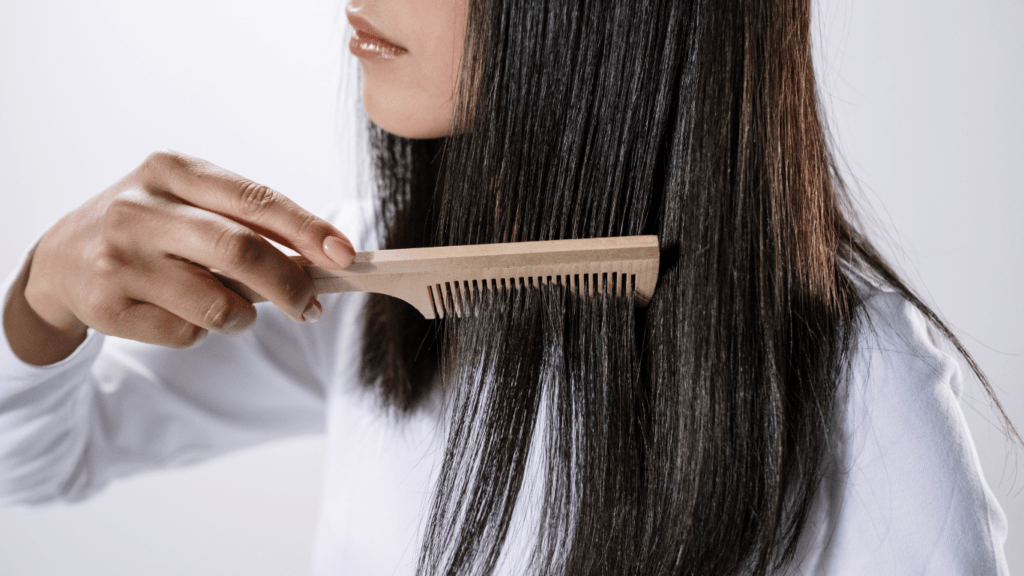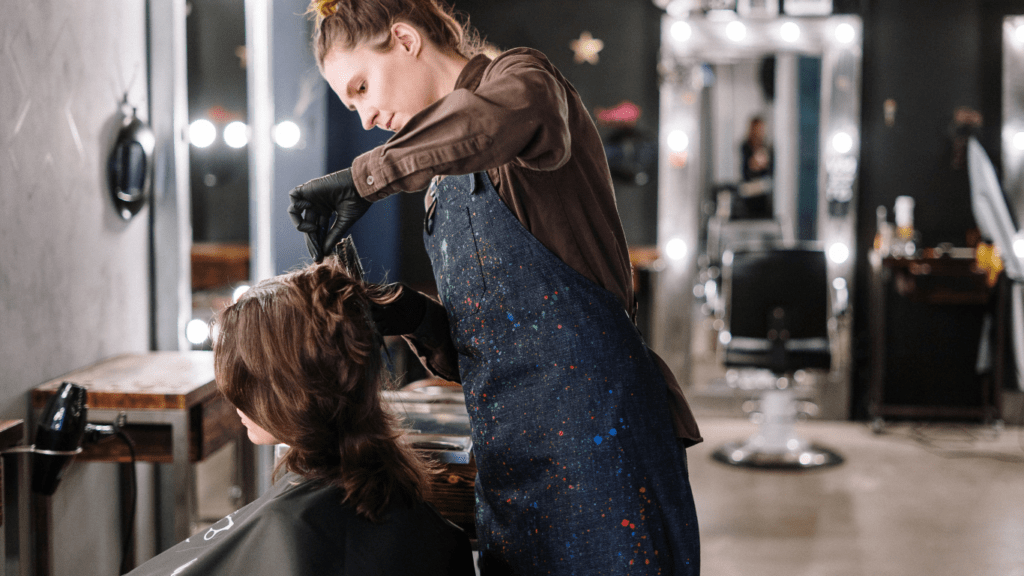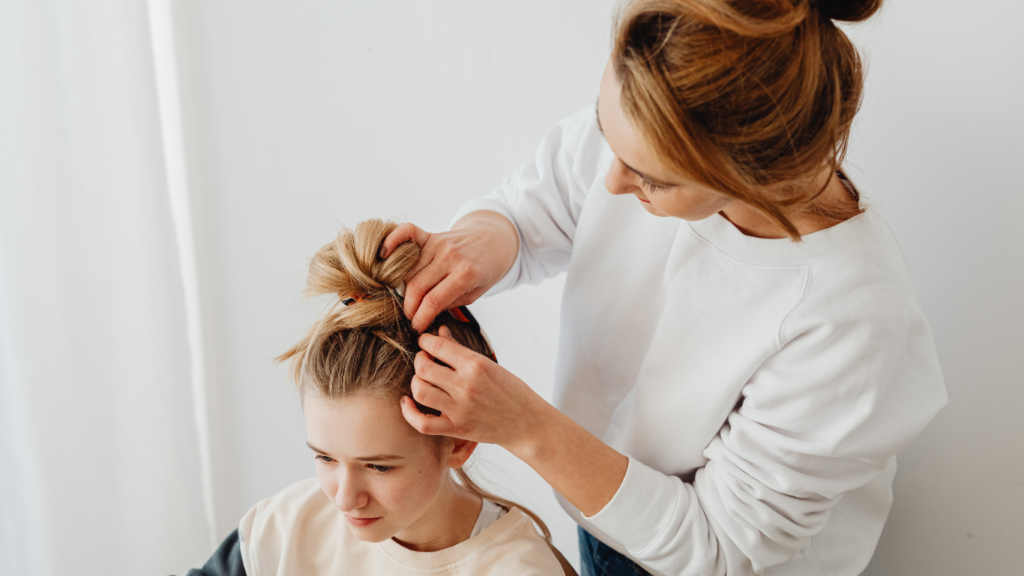Understanding Hair Types
Understanding hair types is essential for effective hair care. Different hair types require tailored treatments and products.
Identifying Your Hair Type
Identifying your hair type starts with texture. Hair can be straight, wavy, curly, or coily. Straight hair lacks curl, lays flat, and can become oily. Wavy hair has loose curls and can be frizzy. Curly hair forms tight spirals and usually has volume but can be dry. Coily hair has tight curls or kinks, often appearing dense and prone to shrinkage.
Porosity plays a role in hair type too. Low-porosity hair repels moisture, while high-porosity hair absorbs it easily but loses it just as fast. Density refers to the number of strands on your scalp. Low-density hair has fewer strands and often a thinner appearance.
Common Challenges for Each Hair Type
Straight hair often suffers from oiliness. This occurs because natural oils travel down the hair shaft easily. It can also look limp.
Wavy hair faces frizz and undefined waves. Humidity exacerbates this issue. Heavy products weigh it down.
Curly hair struggles with dryness and tangles. The natural shape prevents even distribution of oils. It’s also prone to frizz.
Coily hair often deals with breakage and shrinkage. Tight curls are delicate and need gentle handling. Due to shrinkage, length can appear significantly shorter.
Essential Hair Care Products

Maintaining healthy hair requires choosing the right products tailored to your hair type and concerns. Here, I’ll cover the essentials—shampoos, conditioners, hair oils, serums, and styling products.
Shampoos and Conditioners
Shampoos clean the scalp and hair, removing dirt and excess oils. For example, clarifying shampoos work for those experiencing heavy product buildup, while moisturizing shampoos suit dry hair by offering hydration. Conditioners, on the other hand, restore moisture and improve hair texture. Regular conditioners help with everyday conditioning, while deep conditioners provide intensive treatment for damaged hair. Selecting a sulfate-free option can be beneficial, especially for those with color-treated or sensitive scalps.
Hair Oils and Serums
Hair oils and serums tame frizz, add shine, and protect against heat damage. Oils like argan, jojoba, and coconut oil nourish and moisturize the hair, making them ideal for dry or curly hair. Serums, often silicone-based, create a protective layer over the hair shaft, reducing frizz and enhancing smoothness. Using a lightweight serum prevents weighing down fine hair while still offering protection and shine.
Styling Products
Styling products help achieve desired hairstyles while protecting hair from damage. Mousse adds volume and defines curls, suitable for wavy and curly hair. Gel offers strong hold and definition, perfect for intricate styles. Heat protectants are essential when using heating tools, preventing breakage, and drying. Choosing alcohol-free styling products can reduce hair dryness and maintain moisture balance.
Recognizing specific needs and selecting the right products ensures healthy, vibrant hair.
Daily Hair Care Routine
Maintaining a daily hair care routine is crucial for healthy hair. Consistent practices help retain moisture, reduce damage, and keep your hair looking vibrant.
Washing and Drying Tips
Choose sulfate-free shampoos to avoid stripping natural oils.
- Use lukewarm water; it’s less drying than hot water.
- Condition your hair every wash, focusing on the ends.
- Rinse thoroughly to avoid product build-up.
- Dry gently with a microfiber towel or a cotton T-shirt to minimize friction.
- Pat dry rather than rubbing. Air drying is best, but if using a blow dryer, select a low-heat setting.
- Hold the dryer at least 6 inches from your hair to prevent heat damage.
Combing and Brushing Techniques
Detangle hair starting from the ends and work your way up.
- Use a wide-tooth comb on wet hair to avoid breakage.
- For dry hair, select a brush suitable for your hair type; boar bristle brushes distribute natural oils well.
- Brush gently to prevent unnecessary stress on hair strands.
- Combing or brushing should be done in sections for manageability, especially for thicker or coily hair.
Advanced Hair Treatments
Engaging in advanced hair treatments can significantly enhance hair health and appearance. These treatments delve deeper than daily care routines, addressing specific hair concerns at a cellular level.
Deep Conditioning Treatments
Deep conditioning treatments penetrate hair shafts to provide intense hydration and repair. These treatments typically contain proteins, vitamins, and essential oils that nourish and strengthen hair. For best results, apply a deep conditioner once a week. Leave it on for 20-30 minutes, using a shower cap to trap heat and enhance absorption. Popular ingredients in these conditioners include argan oil, keratin, and shea butter.
Scalp Care and Exfoliation
Healthy hair starts with a healthy scalp. Scalp care and exfoliation remove dead skin cells, excess oil, and product buildup, promoting a clean environment for hair growth.
Exfoliate once a week using products with ingredients like salicylic acid, charcoal, or tea tree oil. Gently massage the scalp in circular motions, then rinse thoroughly with lukewarm water. These practices improve blood circulation, which can lead to stronger hair roots.
DIY Hair Masks
DIY hair masks use natural ingredients to target specific hair issues like dryness, dullness, or damage. Common ingredients include honey, avocado, egg, and yogurt, each offering unique benefits.
For example, mix avocado and honey for a hydrating mask, or combine egg and yogurt for strengthening. Apply the mask to clean, damp hair and leave it on for 15-20 minutes. Rinse with cool water and follow up with a gentle shampoo and conditioner.
Engaging in these advanced treatments complements daily care routines, giving hair the extra boost it needs to remain vibrant and healthy.
Protecting Your Hair from Damage
Protecting hair from damage is crucial for maintaining its health and vibrancy. Several strategies can minimize harm and promote strong, resilient hair.
Heat Protection Strategies
When using heat styling tools, applying heat protectant sprays or serums is essential. These products create a barrier that reduces moisture loss and prevents heat-induced damage.
Opt for tools with adjustable temperature settings to use the lowest effective heat level. Incorporate a heat-free styling routine occasionally, like air drying or using foam rollers, to give your hair a break.
Tips for Preventing Hair Breakage
Minimize hair breakage by brushing gently with a wide-tooth comb, especially on damp hair. Avoid tight hairstyles that put stress on the roots and lead to tension and breakage. Using silk pillowcases can decrease friction while sleeping, reducing breakage. Additionally, keep hair moisturized with leave-in conditioners and oils to enhance elasticity and strength.
Importance of Regular Trims
Regular trims every 6-8 weeks help prevent split ends from progressing up the hair shaft. Trimming removes damaged sections and promotes healthier growth. Even if growing hair out, frequent trims ensure it remains healthy and vibrant throughout the process.




